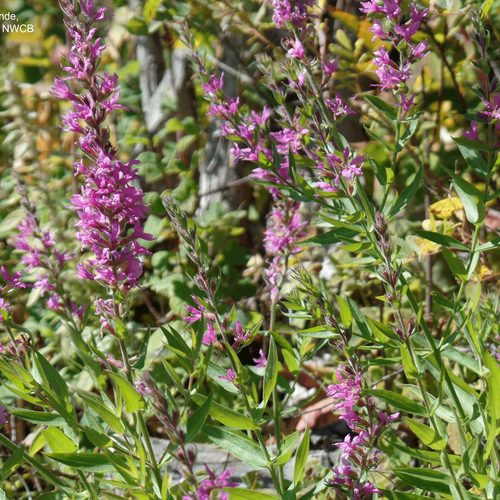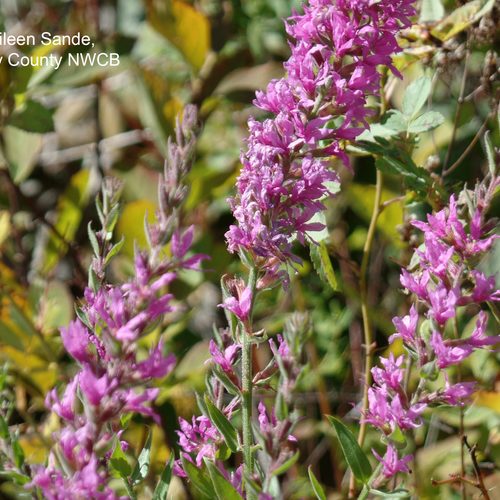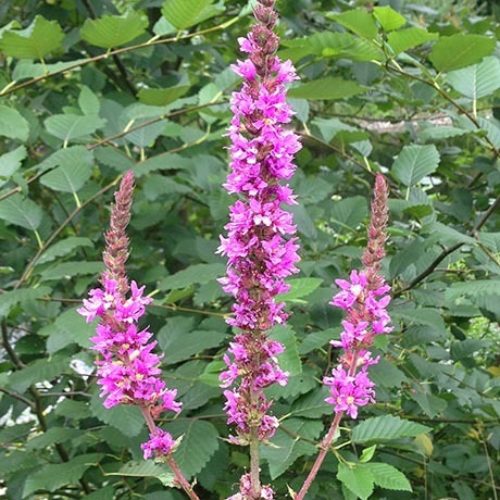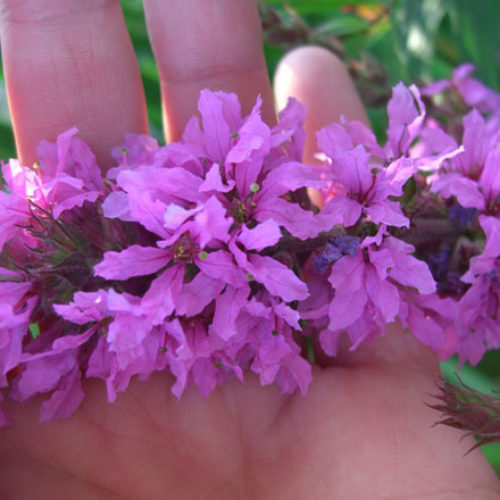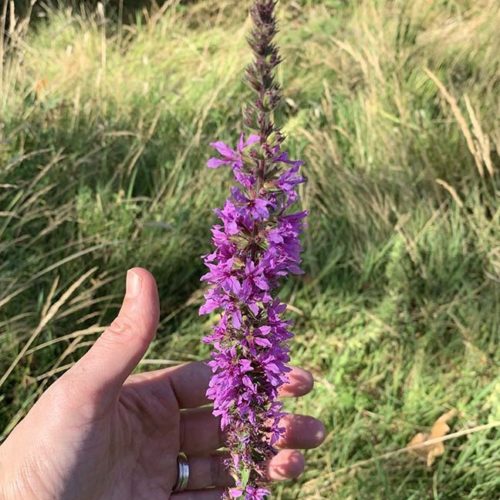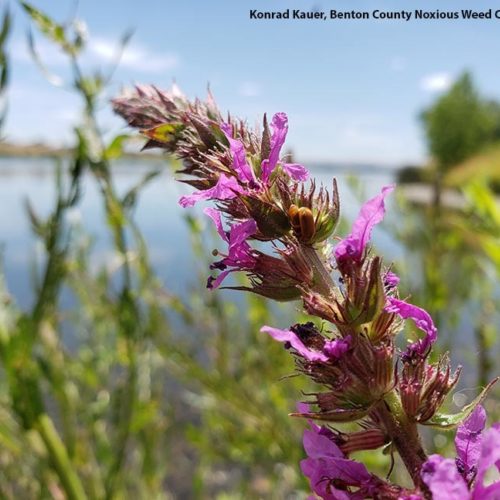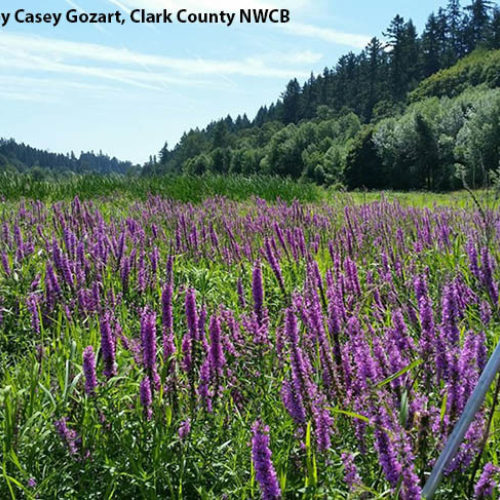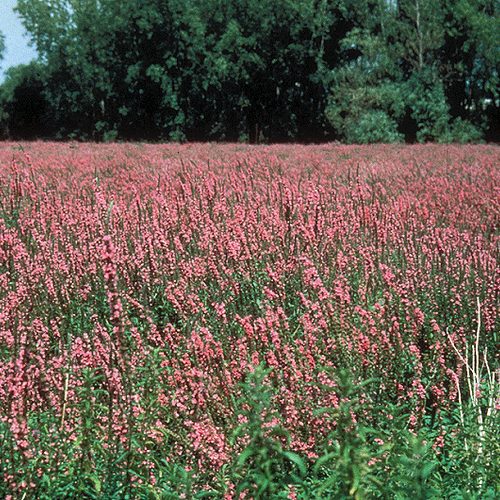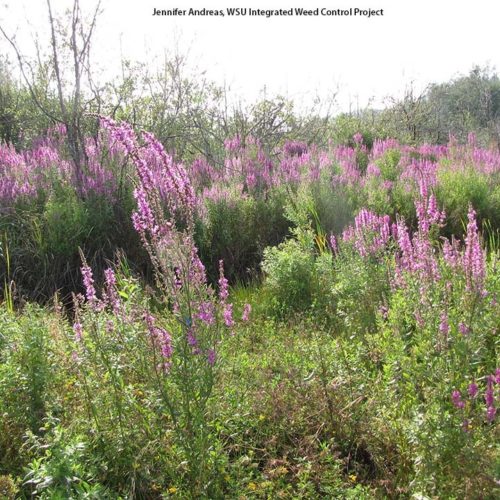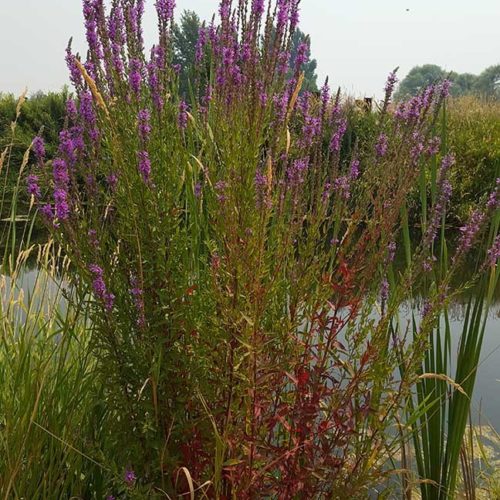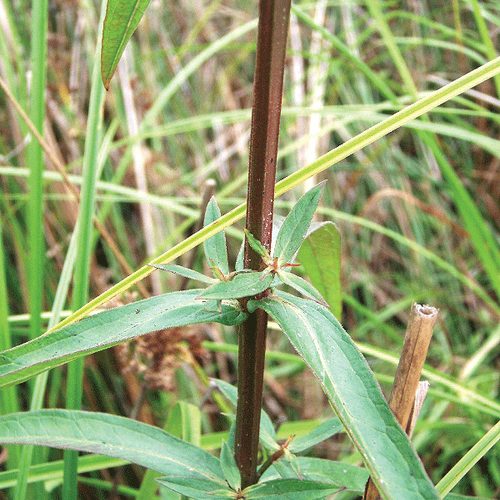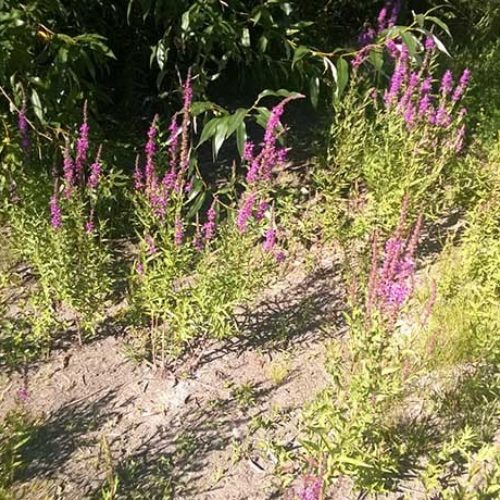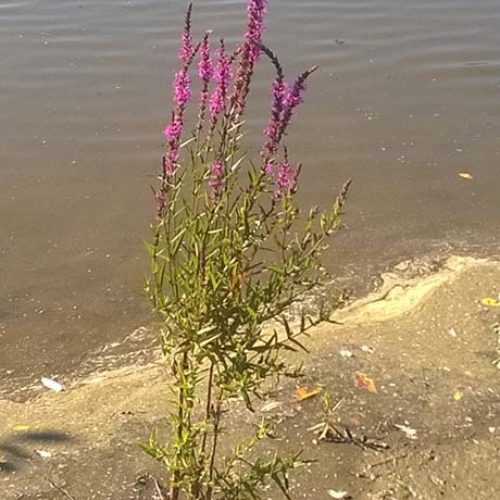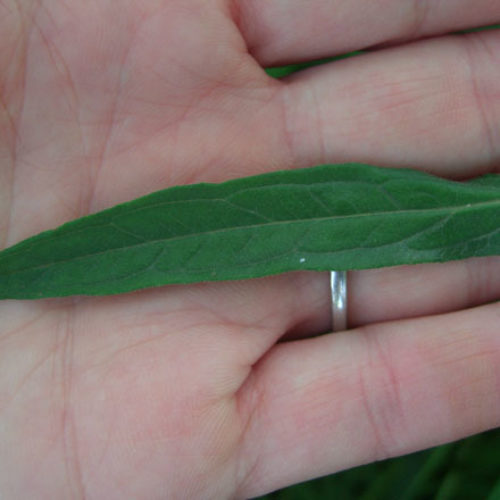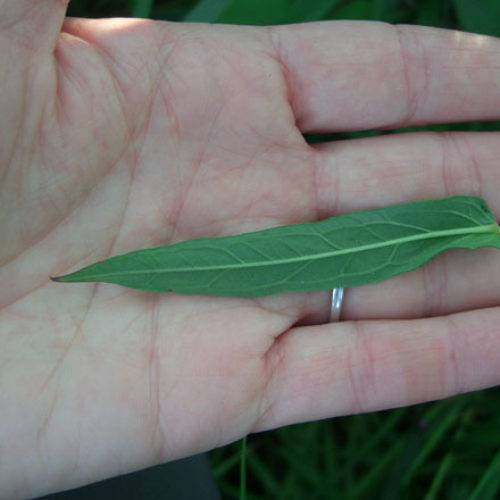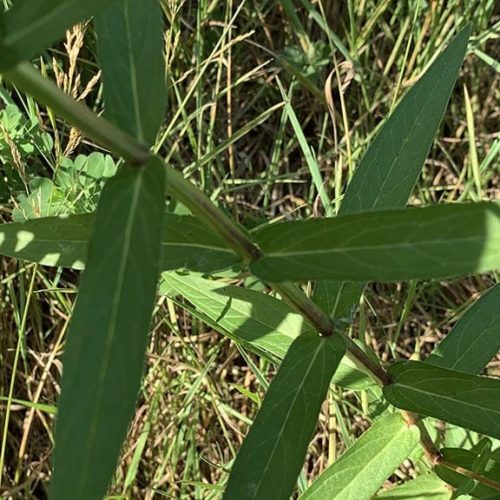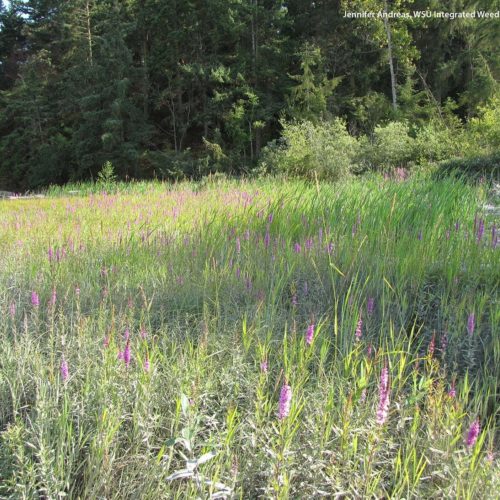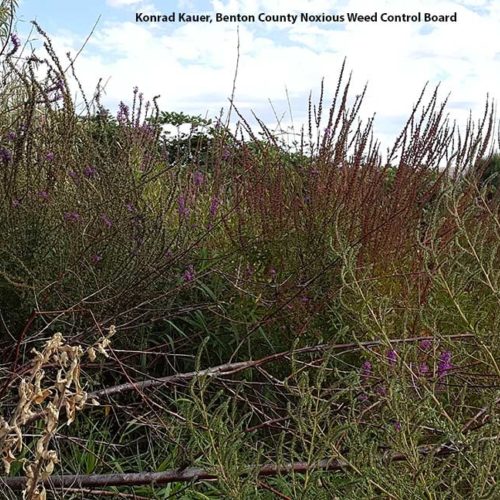Purple Loosestrife
Lythrum salicaria
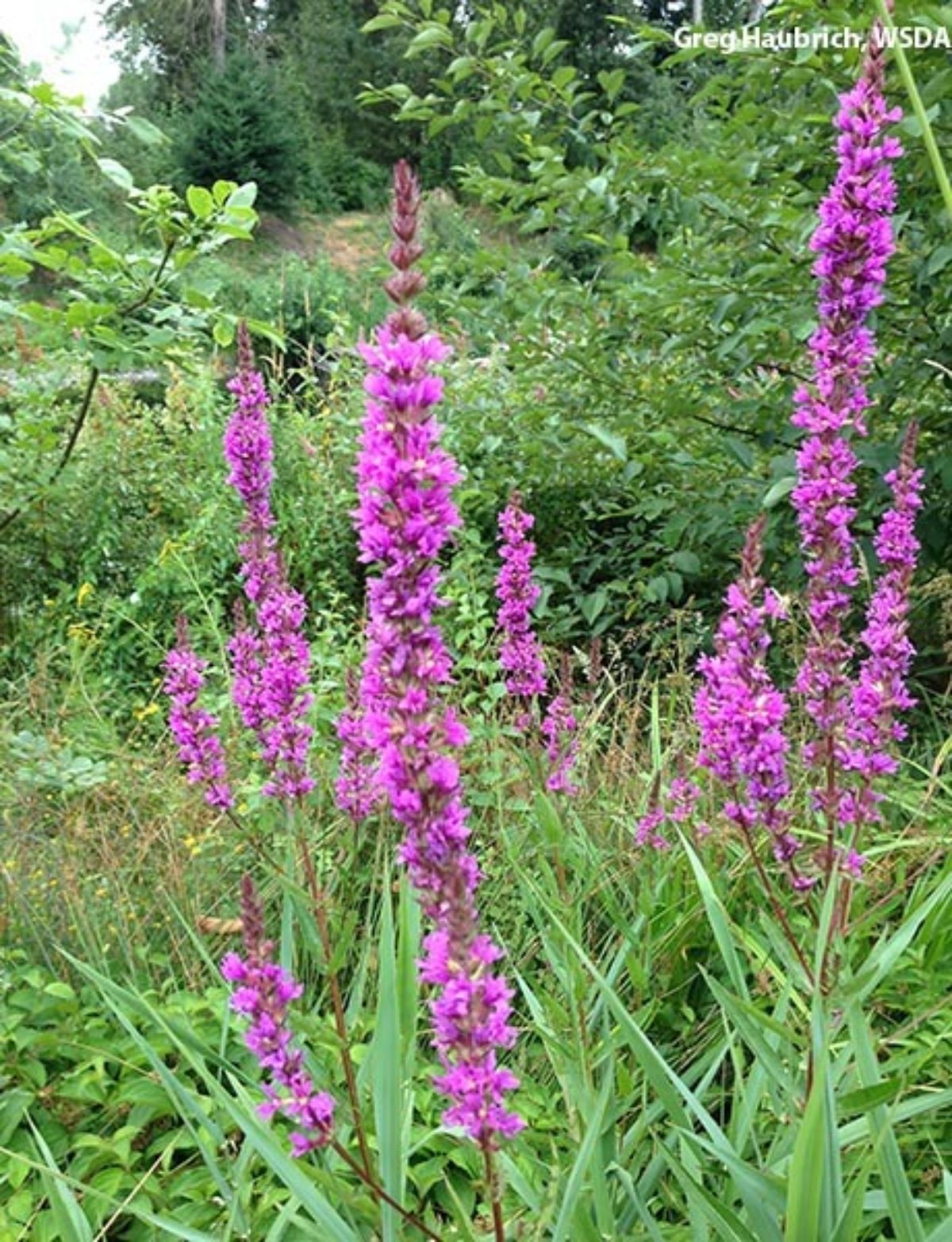
Family: Lythraceae
Other Common Names: spiked loosestrife
Weed class: B
Year Listed: 1988
Native to: Europe, Asia, Australia and Northern Africa
Is this Weed Toxic?:
not known to be
Legal listings:
This plant is also on the Washington State quarantine list. It is prohibited to transport, buy, sell, offer for sale, or distribute plants or plant parts of quarantined species into or within the state of Washington or to sell, offer for sale, or distribute seed packets of seed, flower seed blends, or wildflower mixes of quarantined species into or within the state of Washington. Please see WAC 16-752 for more information on the quarantine list. For questions about the quarantine list, contact the Washington State Department of Agriculture's Plant Services Program at (360) 902-1874 or email PlantServices@agr.wa.gov.
Why Is It a Noxious Weed?
Purple loosestrife is a vigorous competitor and can crowd out other vegetation including native species. It can quickly dominate a site and adapt to environmental changes. Loosestrife stands provide poor cover for waterfowl.
How would I identify it?
General Description
Purple loosestrife is an emergent aquatic plant. It can reach up to 10 feet tall and 5 feet wide and has a persistent, perennial tap root and spreading rootstock.
Flower Description
Flowers are densely clustered on a 4-16 inch terminal flowering spike. Flowers are showy and magenta with 5 to 7 petals.
Leaf description
Leaves are alternate, opposite or in whorls of 3. They are 1.5 to 4 inches long, lance-shaped to narrowly oblong and sometimes are covered with fine hairs.
Stem description
Stems are herbaceous and upright, branched or unbranched and somewhat square with 4 to 6 sides. Each plant may have 30 to 50 stems with flowers that form at the ends.
Fruit Seed Description
Seeds are in capsules.
May Be Confused With
Native spirea (Spirea douglasii) and fireweed (Chamerion angustifolium, syn. Epilobium augustifolium) look similar to purple loosestrife. If you need help with plant identification, please contact your county noxious weed coordinator.
Where does it grow?
Purple loosestrife occurs in freshwater and brackish wetlands as well as streams, marshes and other habitats with moist ground or standing water. Please click here to see a county level distribution map of purple loosestrife in Washington.
How Does it Reproduce?
Purple loosestrife reproduces by seed and vegetatively by stems fragments in favorable conditions. A mature plant can produce 2.7 million thin-walled, flat seeds.
How Do I Control It?
Mechanical Control
Cutting alone is not a control option for purple loosestrife. Shoots and adventitious roots will develop. Digging up small infestations or individual plants can be effective. Make sure to remove the roots. Remove and properly dispose of plant parts (stems, roots, root crown) to avoid plants parts resprouting. Monitor the site for any resprouting plants or seedlings. Check with your county noxious weed control board about local disposal options.
Biological Control
Loosestrife beetles, Galerucella calmariensis and Galerucella pusilla, adults and larvae impact plant growth and reproduction by feeding heavily on the plant's leaves, stems and buds. The loosestrife root weevil, Hylobius transversovittatus adults feed on plant foliage and the larvae feed within the roots.The loosestrife seed weevil, Nanophyes marmoratus, adults and larvae impact the plants by feeding on unopened flower buds. For more information about these biological control agents of purple loosestrife, please visit WSU Extension Integrated Weed Control Project.
Herbicide Control
Because herbicide availability and regulation differ between states, we recommend the Washington Department of Ecology website for information on aquatic weed management and herbicides, or contact your county noxious weed coordinator.
For More Information
See our postcard for early detection information about purple loosestrife.
See our Written Findings for more information about purple loosestrife (Lythrum salicaria).
Mason County NWCB Fact Sheet on purple loosestrife
Jefferson County NWCB Fact Sheet on purple loosestrife
Island County NWCB Fact Sheet on purple loosestrife
Clallam County NWCB Fact Sheet on purple loosestrife
King County NWCB Fact Sheet on purple loosestrife
King County NWCB Fact Sheet on purple loosestrife in Spanish
Whatcom County NWCB Fact Sheet on purple loosestrife
Stevens County NWCB Fact Sheet on purple loosestrife
Cowlitz County NWCB Fact Sheet on purple loosestrife
Thurston County NWCB Fact Sheet on purple loosestrife
Lincoln County NWCB Brochure on purple loosestrife
Control Options for purple loosestrife from King County
Control Options for purple loosestrife from Whatcom County



